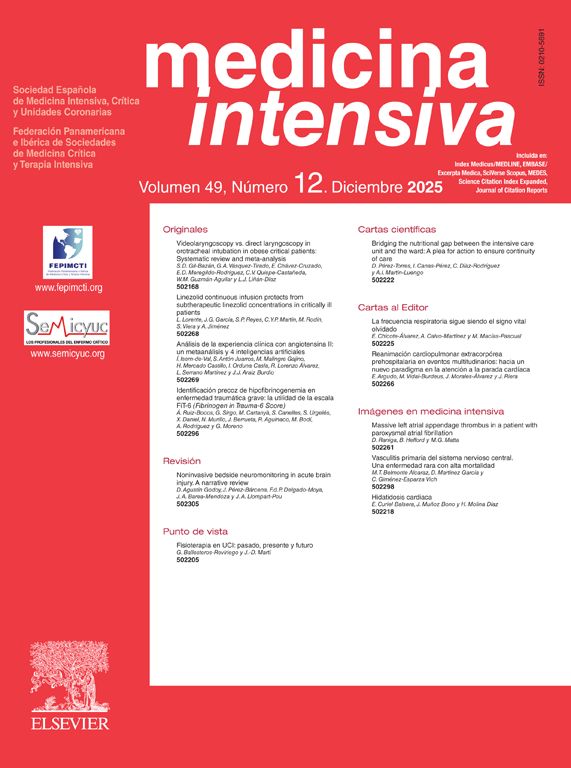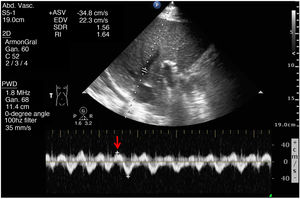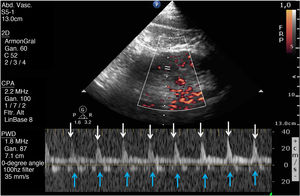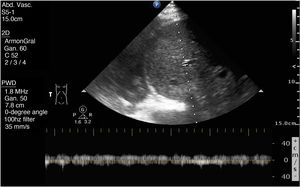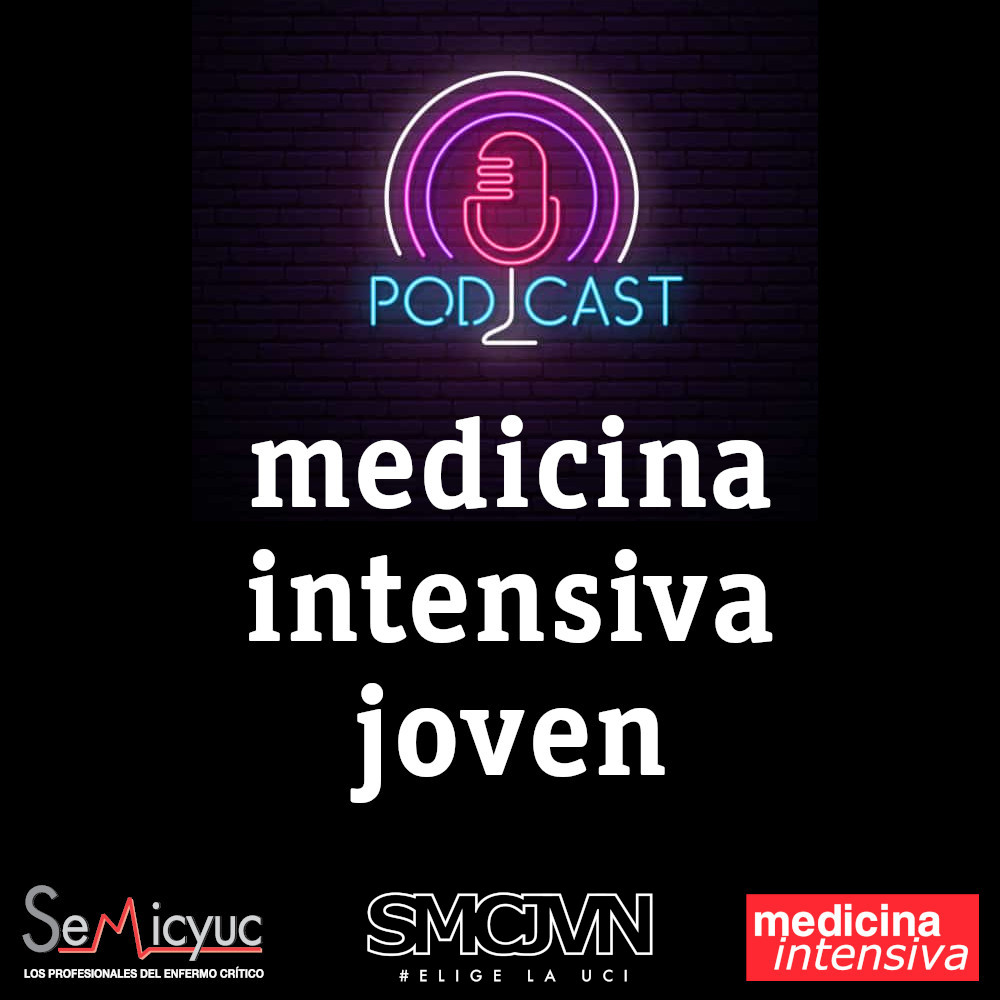This is the case of an 86-year-old man admitted to the ICU due to right-sided heart failure (RSHF) after Mitraclip® implantation, severe chronic pulmonary hypertension, acute kidney injury, and elevated levels of transaminase and bilirubin. The VExUS (Venous Excess Ultrasound Score) system was used. Fig. 1 shows flow reversal during ventricular systole on the Doppler echocardiography of suprahepatic veins (red arrows). Fig. 2 shows the monophasic renal interlobar venous Doppler flow pattern (lack of venous flow [blue arrows] in systole [white arrows]). Both findings are suggestive of severe systemic venous congestion (SVC). However, portal vein Doppler (PVD) (Fig. 3) was not pulsatile (as it would have been expected in SVC). Cirrhosis-induced portal fibrosis (due to RSHF) prevents the transmission of pulsatility across venous flow being PVD, in this case, not assessable with the VExUS to diagnose SVC due to being a false negative outcome.
El factor de impacto mide la media del número de citaciones recibidas en un año por trabajos publicados en la publicación durante los dos años anteriores.
© Clarivate Analytics, Journal Citation Reports 2025
SJR es una prestigiosa métrica basada en la idea de que todas las citaciones no son iguales. SJR usa un algoritmo similar al page rank de Google; es una medida cuantitativa y cualitativa al impacto de una publicación.
Ver másSNIP permite comparar el impacto de revistas de diferentes campos temáticos, corrigiendo las diferencias en la probabilidad de ser citado que existe entre revistas de distintas materias.
Ver más
